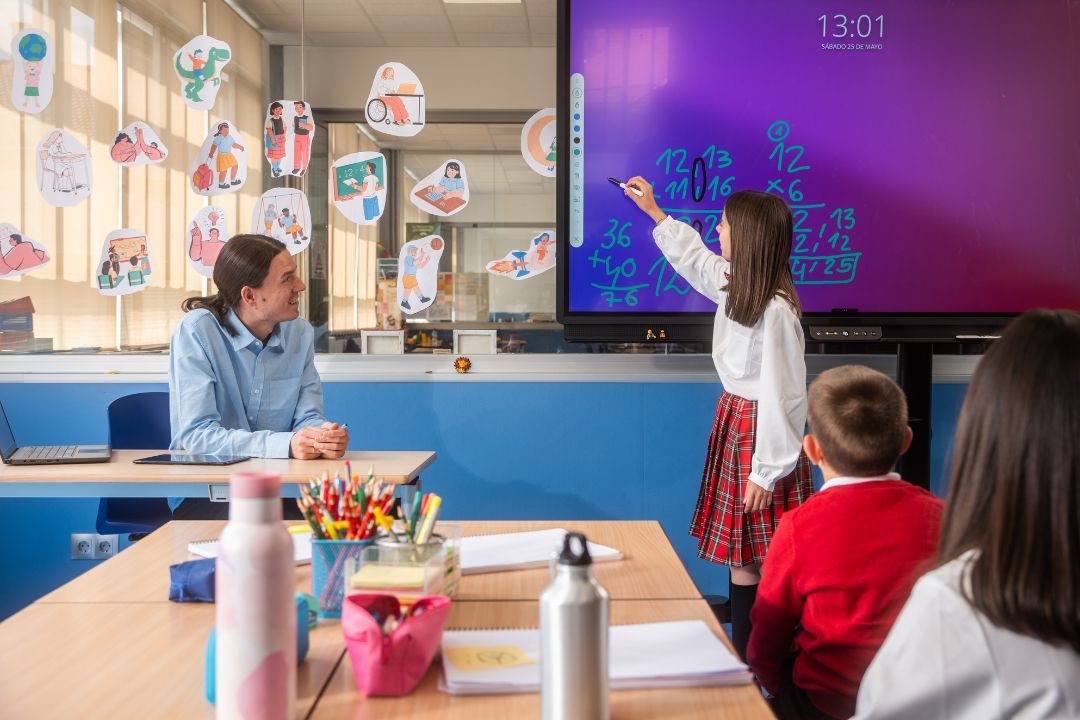Interactive tools play a pivotal role in making language learning both engaging and effective. Whether it’s through games, stories, or other dynamic activities, these methods help learners—especially children—grasp new languages more intuitively.
Why Interactivity Matters
Traditional language learning often focuses on repetition and memorization, but interactive tools bring the process to life. By using games, quizzes, or stories, students engage multiple senses and cognitive functions. This immersive approach helps learners form stronger connections with the material, improving retention and recall. Interactive methods also introduce an element of play, reducing the pressure and making learning enjoyable.
Games: Making Learning Fun
Language-learning games are particularly effective for young learners. Simple vocabulary games like “memory match” or “Simon says” with commands in Spanish turn basic repetition into fun. For older students, more complex games that incorporate sentence-building or verb conjugation can enhance grammar skills. Online games also provide real-time feedback, helping students identify areas for improvement immediately.
Interactive quizzes, another form of gaming, help solidify concepts. At Vamospanglish, quizzes about different topics, such as Spanish verb tenses or vocabulary related to hobbies and activities, are both enjoyable and educational.
Stories: Contextual Learning
Stories offer learners a context for the new language. Instead of memorizing isolated words, students see them in action, within conversations and narratives. This allows learners to understand not only vocabulary but also sentence structure, grammar, and cultural nuances.
For younger learners, stories filled with vibrant characters and simple dialogues in Spanish help spark interest. For older students, more complex narratives that incorporate cultural references and advanced grammatical structures are introduced. The interactive element comes from making the students part of the story—whether it’s by role-playing characters or answering questions about the plot.
At Vamospanglish, stories are tailored to different age groups. For younger children, short, animated stories with lots of repetition build vocabulary. For teens, stories about cultural experiences and historical events enhance both language skills and cultural understanding.
Interactive Resources: Building Connections
Interactive resources go beyond games and stories—they include videos, worksheets, and role-playing scenarios that encourage students to practice what they’ve learned in realistic settings. For instance, language learning platforms often include dialogue simulations where students practice speaking and listening in real-life scenarios like ordering at a restaurant or having a conversation with friends.
Role-playing is a valuable technique used by Vamospanglish for teens and adults. By simulating real-world conversations, learners practice thinking and responding in the target language, which is essential for building fluency.
Digital Learning Platforms: Tailored Learning Experiences
Online platforms designed for language learning, like Vamospanglish, make interactive learning more accessible. These platforms often offer customized learning paths based on the learner’s level and goals. Tools like e-books, downloadable games, and short quizzes are readily available for students, allowing them to practice in their own time and pace.
Learners can also track their progress through dashboards, earning points, badges, or rewards for completing various tasks. These gamification techniques boost motivation and create a sense of accomplishment, encouraging continued learning.
Benefits of Interactive Learning Tools
- Engagement: Games, stories, and digital resources make learning more enjoyable and maintain students’ interest over time.
- Retention: By engaging multiple senses and offering real-world context, interactive tools improve memory retention.
- Personalized Learning: Different tools can be tailored to suit different learning styles and paces, allowing each student to progress in a way that works best for them.
- Immediate Feedback: Many games and quizzes offer instant feedback, helping learners understand where they need improvement and how to adjust their approach.
- Increased Confidence: As learners practice and succeed in interactive tasks, their confidence grows, encouraging them to take risks and engage more deeply in the language.
How to Use Interactive Tools Effectively
While interactive tools are powerful, they are most effective when used in conjunction with other learning methods. A balanced approach that includes traditional lessons, speaking practice, and interactive tools ensures that learners get the most out of their language journey.
For younger children, focus on games and simple stories to make the process fun and engaging. As they grow, incorporate more challenging quizzes and interactive grammar exercises. For teens and adults, role-playing scenarios, dialogue simulations, and cultural stories add depth to their learning experience.
Conclusion
Interactive tools in language learning—whether games, stories, or other digital resources—are powerful aids that make learning Spanish exciting and effective. At Vamospanglish, these tools are integrated into every age group’s learning experience, ensuring that students are not just memorizing vocabulary and grammar rules but actively using them in engaging, real-world contexts.
By using a mix of play, contextual learning, and digital resources, Vamospanglish ensures that each student is equipped with the tools to learn, grow, and master Spanish at their own pace, making the language learning journey enjoyable and rewarding.

